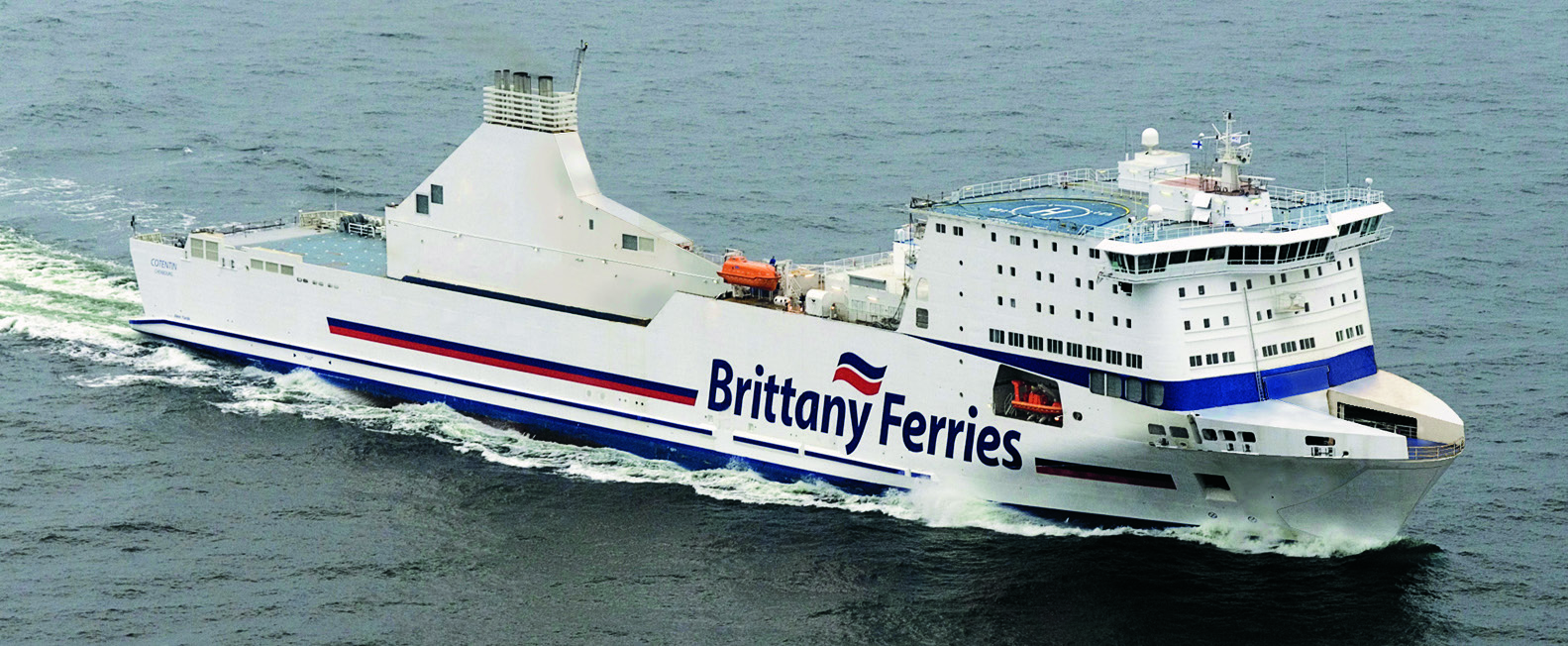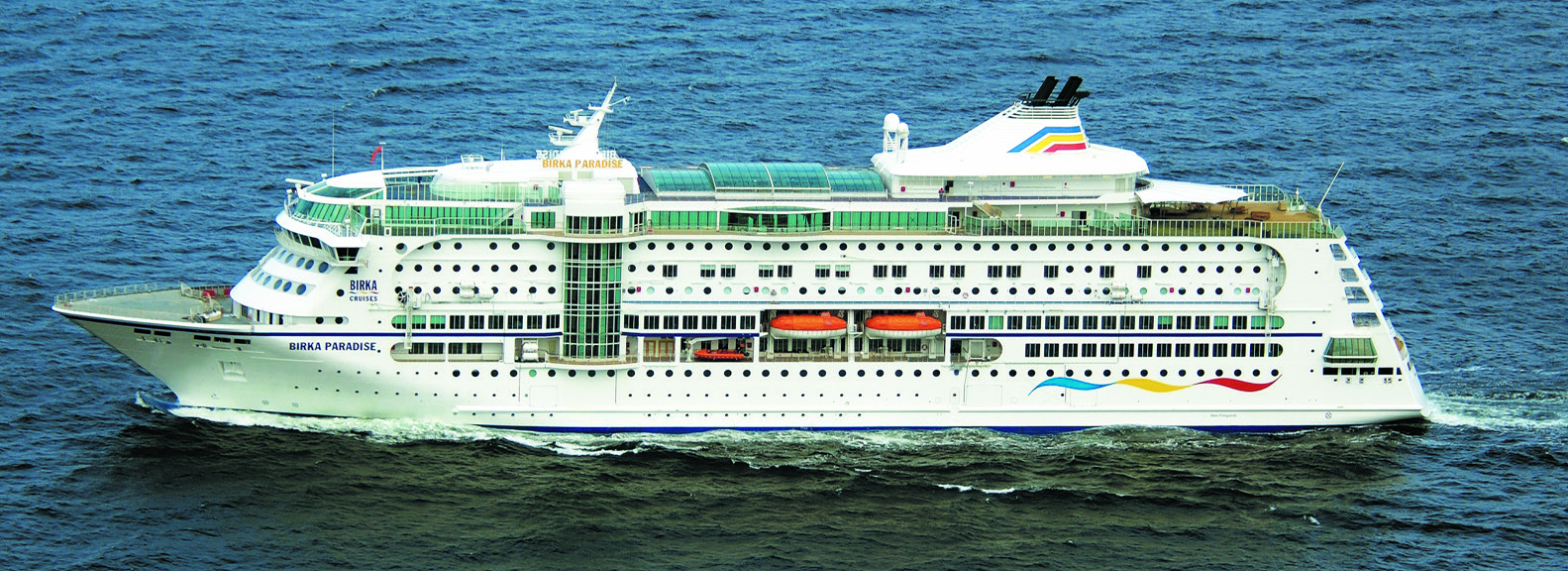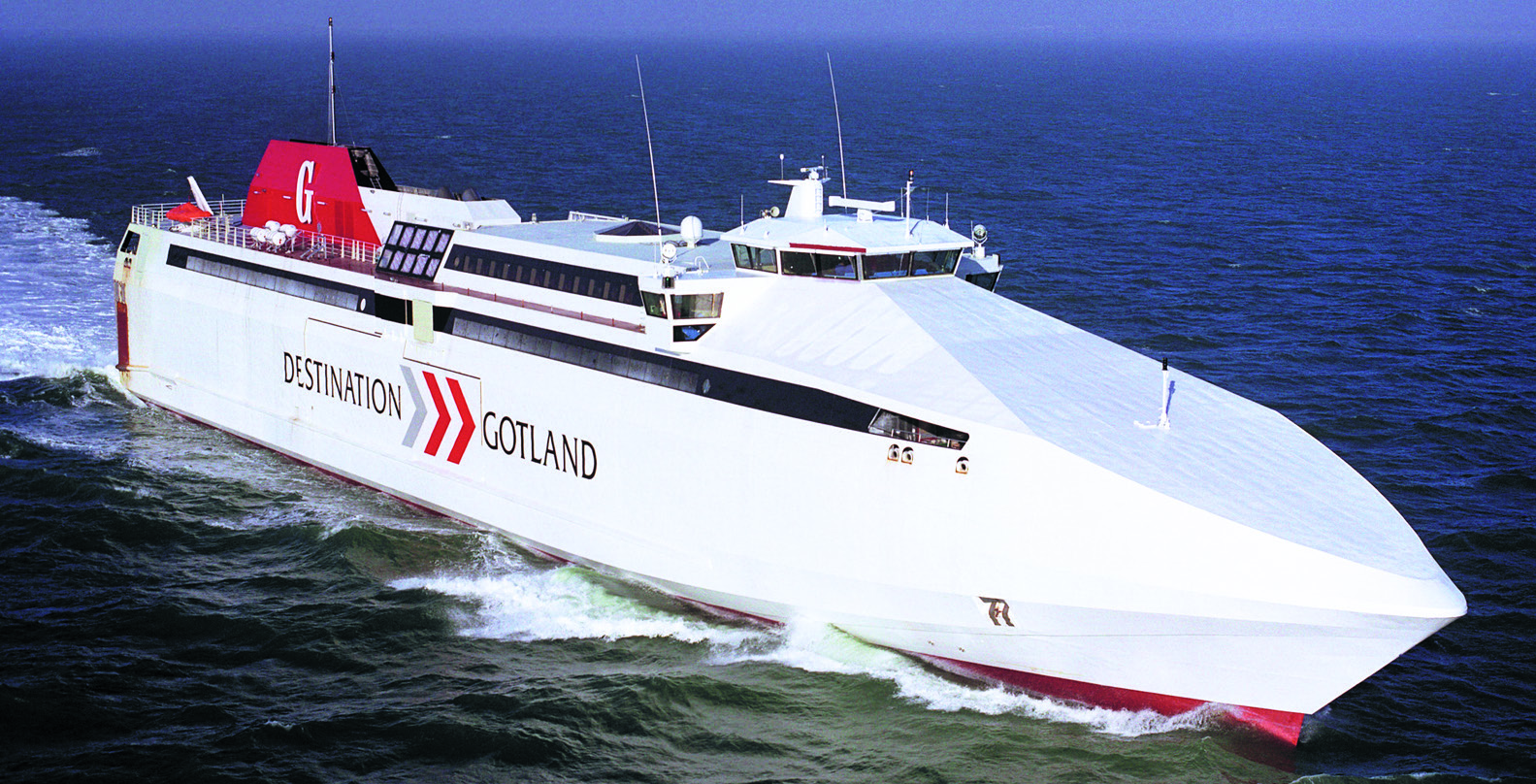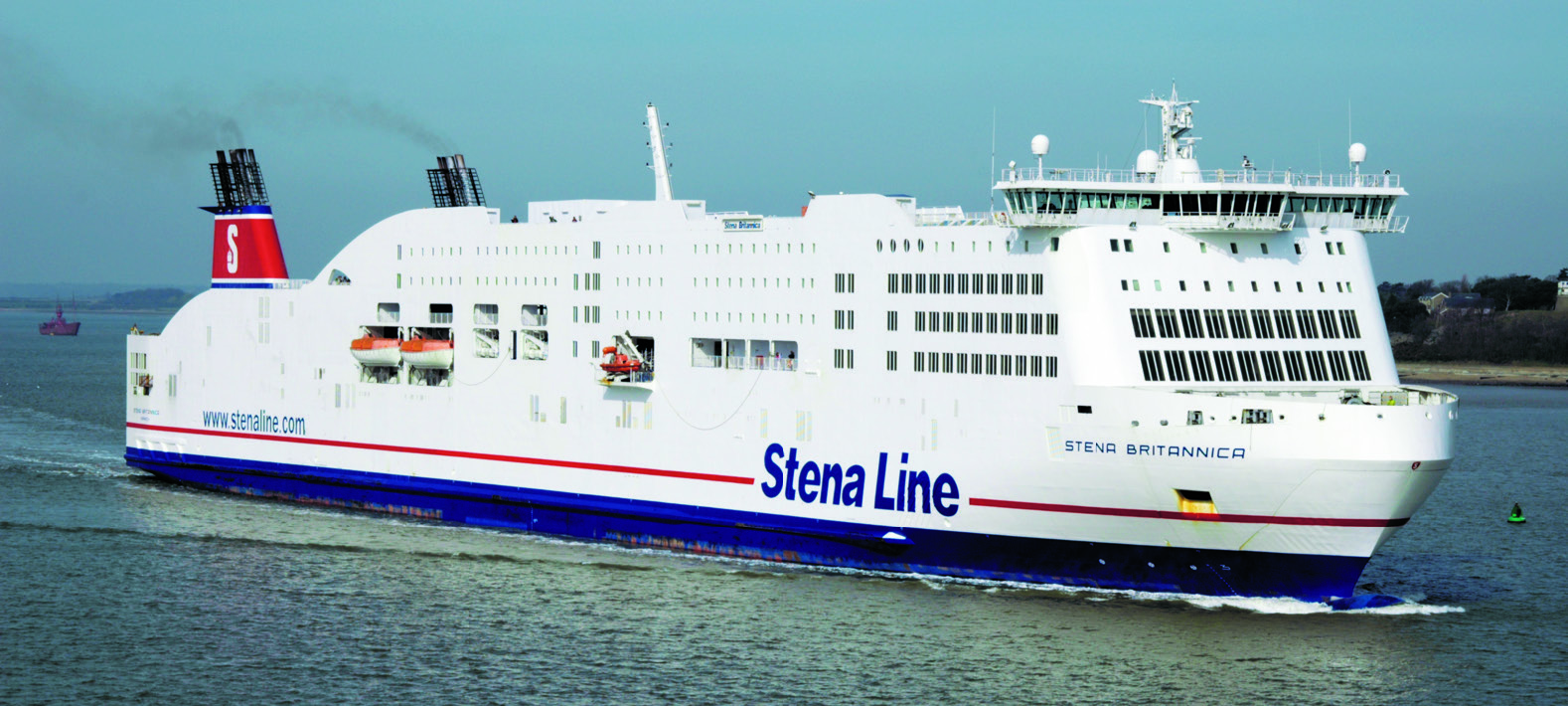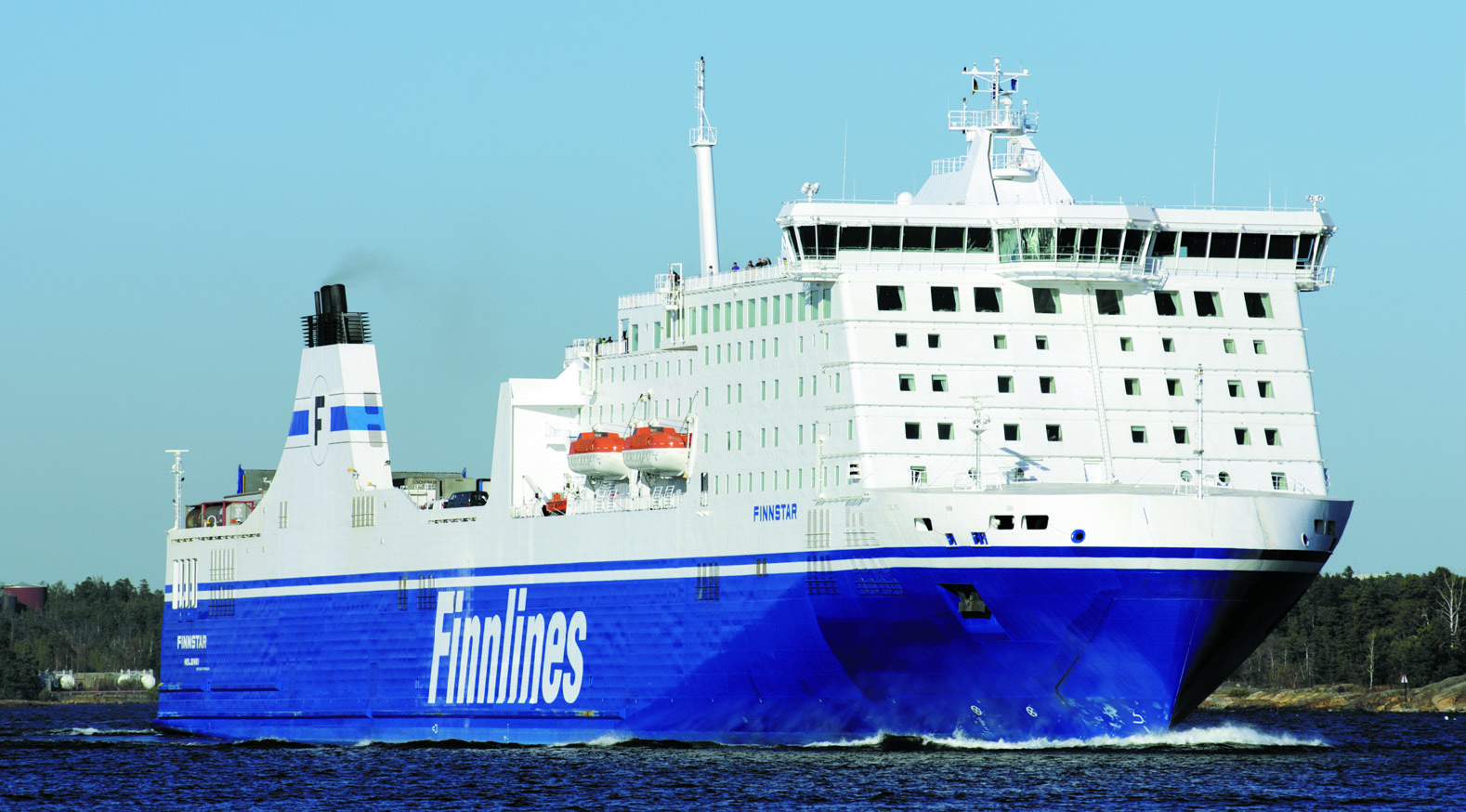

FERRIES
The term “ferry” originally described a vessel carrying passengers or cargo on short trips across rivers or harbours or coastwise to inland. The USCG defines a ferry as a vessel, “ having provisions only for deck passengers and/or vehicles operating on a short run on a frequent schedule between two points with the most direct water route offering a public service of the type normally attributed through a bridge or tunnel”. Ferries nowedays are primarily used to carry passengers and their cars, as well as large numbers of heavy-freight vehicles. The car and cargo capacity of the ferries has grown significantly during the 90’s. The number of ro-ro decks has increased from initially only one to two or even three full height trailer decks. In addition, many ferries have a lower hold to increase the cargo capacity further on.
BIRKA PARADISE is fitted with four Wärtsilä 6L46 main engines, each developing 5860kW at 500rpm splitted between two engine rooms. Electrical power comes from four Wärtsilä/Leroy- Somer 3312kVa alternators.
- Cruise ferry – A ferry with cabin space for all passengers and large public spaces with restaurants, lounges, bars, etc. Cruise ferries operate on overnight routes and some passengers are on a “cruise” and travel back with ferry on the return trip. The ro-ro decks are small and the passenger cars occupy a large part of the ro-ro space.
- Double-ended ferry – A shuttle ferry with propellers at both ends, featuring an identical fore and aft body. Double-ended ferries are commonly used on short commuter runs where the time lost while turning around a single-ended ferry at each end of the crossing makes a considerable percentage of the time required for the trip, and, thus, the double-ended ferry can transport more units per hour than a single-ended ferry of the same size. See also Double-ended ferry COASTAL RENAISSANCE and Double-ended ferry BASTØ III.
- Fast ferries – Various vessels in the 600 – 1000dwt capacity range, with a service speed well above 30 knots. Weight minimizing is a major consideration in the design of fast ferries. Most designs favour aluminium wavepiercing catamarans or steel monohulls. Propulsion is provided either by diesel engines or by gas turbines. Fast ferries are designed to carry passengers and a variable mix of cars and freight on shortsea routes (15-250 nautical miles). They operate between dedicated docking systems, including berths, linkspans and terminals. Introducing fast ferries created new reasons for travel and provided a good growth in business for operators. See also Catamaran fast ferry FRANCISCO.
- PaxCar ferries – Ferries with passenger facilities suitable for longer routes. They have a full-length superstructure to accommodate the passenger cabins and public spaces. Hoistable car platforms are often installed to increase the deck area for private cars.
Main propulsion is provided by four 10,395kW/500rpm, Wärtsilä 9-cylinder L46D engines, connected in pairs to two twin-input/single-output reduction gearboxes, and then to a CP propeller running at 150rpm. The combined MCR output is 41,580kW and the recorded trial speed 25 knots.
- RoPax ferries – Ferries with large ro-ro decks and limited passenger facilities. This type often has a lower hold, the main deck and upper deck for ro-ro cargo. The deckhouse is lengthened to accommodate space for passengers. The upper ro-ro deck is then partly covered. Most RoPax ferries have both stern and bow ramps to speed up the loading and unloading.